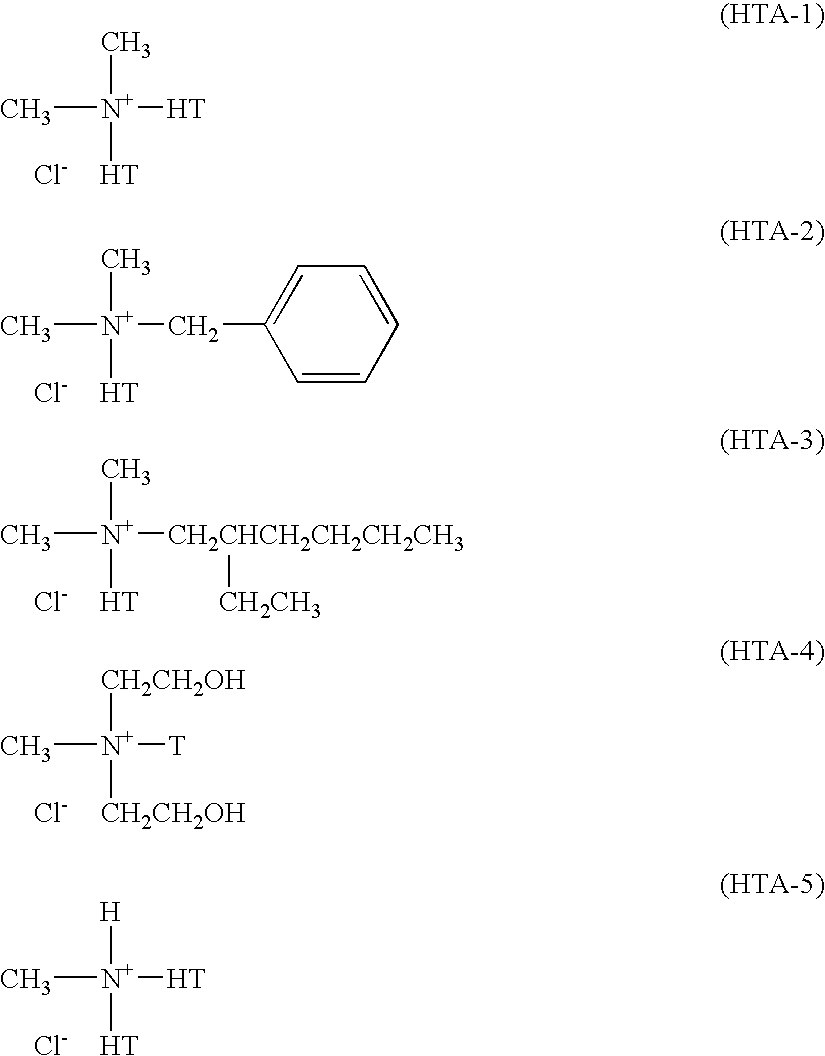Thermally developable materials having improved backside conductive layers
a technology of backside conductive layer and thermoplastic material, which is applied in the field of thermoplastic and photoplastic materials having backside conductive layers, can solve the problems of distinctly different problems, increased formation of various types of “fog” or other undesirable sensitometric side effects, and much effort in the preparation and manufacture of photothermographic materials, so as to improve the conductive efficiency of buried backside conductive layers
- Summary
- Abstract
- Description
- Claims
- Application Information
AI Technical Summary
Benefits of technology
Problems solved by technology
Method used
Image
Examples
example 1
[0304]The following example demonstrates the effect of polyvinyl butyral molecular weight on the resistivity of the resulting buried backside conductive layer.
[0305]Buried Backside Conductive Layer Formulation:
[0306]A dispersion was prepared by adding 16.88 parts of MEK to 7.92 parts of CELNAX® CX-Z641M (containing 60% non-acicular zinc antimonate solids in methanol −4.75 parts net). The addition took place over 15 minutes. Stirring was maintained for 15 minutes.
[0307]A polymer solution was prepared by dissolving 0.52 parts of VITEL® PE-2700B LMW and 1.22 parts of the polyvinyl butyral resin shown in TABLES I and II in 41.25 parts of MEK.
[0308]The polymer solution was added to the CELNAX® CX-Z641M dispersion over 15 minutes with stirring, after which 32.2 parts of MEK was added. The formulation was then stirred for an additional 10 minutes. The dispersion was then removed from the mixing equipment and coated. If desired, the material can be stored for later use. If stored for a long...
PUM
 Login to View More
Login to View More Abstract
Description
Claims
Application Information
 Login to View More
Login to View More - R&D
- Intellectual Property
- Life Sciences
- Materials
- Tech Scout
- Unparalleled Data Quality
- Higher Quality Content
- 60% Fewer Hallucinations
Browse by: Latest US Patents, China's latest patents, Technical Efficacy Thesaurus, Application Domain, Technology Topic, Popular Technical Reports.
© 2025 PatSnap. All rights reserved.Legal|Privacy policy|Modern Slavery Act Transparency Statement|Sitemap|About US| Contact US: help@patsnap.com



